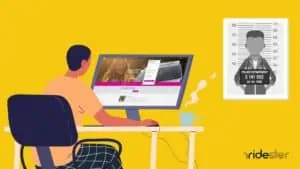- How To Be A Better Driver
- Tip #1: Adjust Your Seat and Steering Wheel
- Tip #2: Adjust Your Mirrors and Check Blind Spots
- Tip #3: Adhere to Traffic Rules at All Times
- Tip #4: Limit Distractions and Stay Alert
- Tip #5: Follow the Three-Second Rule
- Tip #6: Signal Appropriately
- Tip #7: Easy on the Gas and Brakes
- Tip #8: Scan the Full Scene Ahead
- Tip #9: Take Extra Care When Navigating Adverse Conditions
- Tip #10 Take Breaks When Needed
- Green Light to Go
How To Be A Better Driver
We’ve included an overview of our top picks below. For detailed information on each pick, scroll down.
- Tip #1: Adjust Your Seat and Steering Wheel
- Tip #2: Adjust Your Mirrors and Check Blind Spots
- Tip #3: Adhere to Traffic Rules at All Times
- Tip #4: Limit Distractions and Stay Alert
- Tip #5: Follow the Three-Second Rule
- Tip #6: Signal Appropriately
- Tip #7: Easy on the Gas and Brakes
- Tip #8: Scan the Full Scene Ahead
- Tip #9: Take Extra Care When Navigating Adverse Conditions
- Tip #10: Take Breaks When Needed
Tip #1: Adjust Your Seat and Steering Wheel
An improper seating position can impair your driving and cause serious fatigue. This is especially the case if you drive for hours on end—like as an interstate delivery driver.
Ideally, your head should be level with the top of the wheel, and there should be at least 10 inches between your chest and the top of the steering wheel.
We also recommend adjusting the bottom angle of the seat so that your back is well-supported and your thighs are parallel to the ground.
Note: The shoulder portion of the seat belt should be across your collarbone, not your neck.
Also, make sure it points toward your chest when you hold it and not your head. You shouldn’t have to bend your elbows too much to reach it.
Tip #2: Adjust Your Mirrors and Check Blind Spots
You should always check your blind spots before changing lanes, pulling out of a parking spot, or turning. By blind spots, we’re referring to the areas you can’t easily see from inside your vehicle, like the edges behind and to the side of your car.
You can adjust your side and rear-view mirrors to cover as many angles as possible, but you’ll still need to take an extra second or two to turn your head and check for blind spots since mirrors can’t cover every angle.
Speaking of which, are your mirrors adjusted correctly? If not, you need to:
- Adjust your rear-view mirror so you can clearly see the entire rear window when sitting in your normal driving position.
- Adjust the side mirror next to the driver’s seat so you can barely see your car’s side in the mirror’s outer edge. The rest of the mirror should be angled wider to see oncoming traffic in the adjacent lane.
- Lean over toward the passenger seat and adjust your other side mirror until you can barely see the side of your car in the mirror’s outer edge, with the rest of the mirror focusing on the lane next to you.
- Sit normally in your driving position and double-check that your rear-view mirror shows the whole rear window and that both side mirrors are angled out enough to minimize blind spots. Readjust as needed.
Brett’s Take: Thoughts From an Expert
One of the first steps to becoming a better driver is to build confidence, especially if there has been a past accident that has caused fear.
It’s important to face the fear and slowly build up driving confidence. Just remember, you’ve got this.
Regular practice and exposure to different driving conditions enhance overall driving ability.
To improve your driving, consider taking a class from one of the best online traffic schools – they’ll help you gain confidence immediately.
Tip #3: Adhere to Traffic Rules at All Times
Even if you’re in a hurry, remember that breaking the rules and exceeding the speed limit endanger lives. Your life and those of everyone around you are infinitely more important than getting to your destination on time.
Being a good driver and sticking to traffic laws involves:
- Following all traffic lights, signals, and lane markings.
- Coming to a complete stop at red lights and stop signs—no rolling stops!
- Yielding the right of way when required.
- Using turn signals for every turn and lane change.
- Pulling over for emergency vehicles.
Tip #4: Limit Distractions and Stay Alert
Almost 80% of car crashes and 65% of near-misses involve some sort of driver inattention within only three seconds of the event.
These awfully high percentages underline the importance of reducing distractions as much as possible and keeping your eyes focused on the road and your surroundings.
Some distractions you should avoid can include:
Texting
You should never text or talk on the phone while driving. Even hands-free calling can be distracting! Consider switching your phone to airplane mode while on the road, and avoid checking your messages until you’re safely parked.
Eating
Food can also be a major source of distraction. It takes your attention off the road and requires you to take one hand—sometimes even both hands—off the wheel. So, avoid eating or drinking while driving.
Rowdy Passengers
If you’re put in a situation where your passengers are being too disruptive, you should politely ask them to settle down. If they continue their behavior, politely ask them to vacate your vehicle and request another ride.
In this scenario, it helps to have a dash cam installed so that you have evidence of passenger behavior in case of a complaint.
Brett’s Take: Thoughts From an Expert
Ensure that you’re well-rested. Driving under stress or while heavily fatigued can oftentimes lead to crashed and accidents that are entirely avoidable.
Get the right amount of sleep before you drive. And on road trips, make sure to be alert and awake, and avoid driving if you’re not.
Anticipating the actions of other drivers and being prepared for unexpected events is also a key component of defensive driving.
For example, anticipate that others will eventually get frustrated and have road rage.
In these cases, remain calm and don’t give in. Getting frustrated back is easy to do, but only escalates the situation. Instead, remain calm and just keep driving.
Tip #5: Follow the Three-Second Rule
The three-second rule involves leaving three seconds of braking distance between your vehicle and the vehicle in front of you.
If the other vehicle brakes suddenly, you have enough time to react and stop.
When the vehicle ahead of you passes an object (like a road sign), count “one-thousand-one, one-thousand-two, one-thousand-three.”
If you pass the object before reaching three seconds, you’re following too closely and should increase the distance.
Note: Leave at least 4-5 seconds of space instead of three when dealing with poor road or weather conditions.
Tip #6: Signal Appropriately
Though crucial for giving surrounding traffic advance notice of our driving intentions, many don’t prioritize proper signaling as much as we should when driving.
Here are a few signaling best practices:
- Signal well before you turn or change lanes (within at least 100 feet if you’re going over 50 mph).
- Signal early when exiting a highway or making multiple lane changes.
- Leave your signals on until you’ve completed whatever maneuver you’re making.
- If your car signals are malfunctioning, signal with your hands.
- Don’t signal too early or forget to turn off your signals so you don’t confuse other drivers.
- Use hazard lights when moving at unusually slow speeds.
Tip #7: Easy on the Gas and Brakes
Jerky acceleration and braking waste fuel and wear down your brake components quicker and are dangerous, especially if you’re accelerating to beat a red light or gunning it when a light turns green.
You should accelerate gradually and smoothly if moving from a complete stop. And when slowing down, take your foot off the gas gradually instead of braking at the last second.
Then, when you’re about to hit the brakes, press the pedal lightly at first rather than slamming it. This helps prevent wheel lock-up—when the brake pads stop the wheel from spinning.
Tip #8: Scan the Full Scene Ahead
Your eyes should constantly be scanning the full scene ahead and around your vehicle, not staring straight down one static line.
Constant input from all directions allows you to identify risks early on and take appropriate action, whereas target fixation blinds you to potential hazards.
With that in mind, be sure to:
- Check your mirrors every 5-10 seconds.
- Watch farther ahead for braking lights and slowdowns.
- Look for pedestrians about to enter your path.
- Scan intersecting roads for other drivers.
Driving savvily in rain, snow, fog, and other harsh conditions requires extra precautions. Besides increasing your following distance to at least 4-5 seconds, you should avoid sudden braking or acceleration that can cause skids.
To add, you should roll down your windows occasionally to prevent fogging.
If the visibility is still low, you can use wipers and defrosters as needed. Navigation apps can be of great help here as well.
Another thing we recommend doing before hitting the road in adverse conditions is a brief driving test around the block. This is to see if the roads are too slippery and figure out how much pressure is needed to brake effectively.
If braking takes longer than normal or seems uneven, you’re dealing with reduced traction.
In this case, you’ll need to adjust your driving by reducing speed, increasing following distance, and braking early and gently.
Tip #10 Take Breaks When Needed
Driving for extended periods can lead to fatigue, which can affect your concentration and response times. It can also make your body feel very stiff.
If you feel tired, take a short break to refresh. Step outside your vehicle, stretch your legs a bit, and have a quick snack. And if you’re completely drained, take a brief nap—be sure you park in a safe area first, like a rest stop or a gas station.
Know your limits, and don’t drive to the point of exhaustion.
Green Light to Go
If we were to summarize this entire article in a few words, we’d say, “Caution over haste!”
Becoming a good driver isn’t about arriving at your destination as fast as possible. Rather, it’s about arriving safely. It’s not a race, and there are no victory laps, so be patient and responsible on the road.
Stay safe.
Also Read: 10 Creative Ways to Get Paid to Drive





